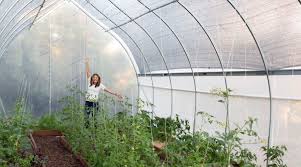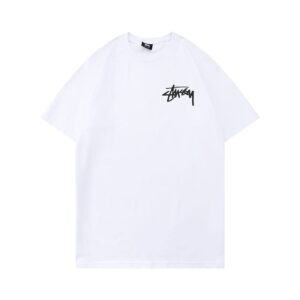
As winter draws near, all growers and gardeners start to question the best greenhouse plastic for winter and how to maintain the health of plants regardless of falling temperatures. Greenhouses serve as a shield, yet without the proper cover material, frost, snow, wind, and reduced daylight hours can ruin even the most resilient crops. The product you select for your greenhouse cover is critical in temperature management, insulation, and light diffusion, particularly during winter in areas where climate change is prevalent. Choosing the most appropriate greenhouse plastic for winter is about finding a balance between durability, protection from UV rays, and heat retention to ensure that your plants are properly shielded for optimal growth.
Why Does the Best Greenhouse Plastic for Winter Matter?
The selection of the optimal greenhouse plastic for winter is not an issue of personal taste—it impacts plant survival and yield directly. Winter introduces difficulties like frost, reduced intensity of sunlight, strong winds, and occasional storms that put a pressure on weak coverings. A thin or not UV-stabilized sheet can easily tear, become cloudy, or not be able to retain heat on prolonged cold nights. Conversely, top winter greenhouse plastic behaves more like a barrier, keeping heat in, dispersing light for uniform coverage, and withstanding heavy weathering. By making informed decisions, growers can push back on the growing season, shelter fragile seedlings, and even sustain year-round production regardless of the chilliest part of the year.
What are the Features that Characterize the Best Greenhouse Plastic for Winter?
To determine the optimal greenhouse plastic for winter, it’s important to know what makes a film better suited for cold-season growth. Thickness is one of the first things to consider; a 6 mil greenhouse plastic is often suggested because it offers good insulation and toughness. UV resistance is also crucial since winter sunlight still releases harmful rays that can deteriorate substandard plastics over time. Another key component is infrared additives in the film that trap heat within the greenhouse and limit heat loss at night. The ideal plastic for a greenhouse in winter also provides excellent light diffusion to make the most of sparse winter sunlight to provide balanced light to plants without hot or cold pockets.
How Does the Ideal Greenhouse Plastic in Winter Assist with Temperature Control?
Maintaining uniform warmth is probably the biggest challenge during cooler times of the year. The ideal greenhouse plastic for the winter season is designed to trap heat during the day and emit it gradually, maintaining relatively even nighttime temperatures. In most situations, greenhouse plastics that incorporate infrared technology bounce back heat into the building, much like a thermal blanket. This serves well for areas that experience long and cold winter nights. By minimizing supplemental heating needs, the best winter greenhouse plastic not only puts more money in growers’ pockets in terms of reduced energy expenses, but it also provides a more natural growing environment. Plants grow most optimally when they stay away from extreme temperature fluctuations, and good plastic can provide that equilibrium.
Where Can the Best Greenhouse Plastic for Winter Be Used?
The advantage of the best winter greenhouse plastic lies in its adaptability for climates and growing systems. In the cold states, like those in the Midwest or Northeast, growers rely on robust, heavy-duty films that can withstand snow loads and sub-zero temperatures. In warmer coastal regions, like Long Beach, California, the ideal greenhouse plastic for winter shields against rain, cooler breezes, and seasonal dips in temperature. It also favors urban rooftop gardens, backyard hoop houses, and commercial greenhouse operations. Irrespective of size or use, the ideal plastic converts the space into a stable, controlled environment all winter long.
Who Stands to Gain Most from Utilizing the Best Greenhouse Plastic for Winter?
The best greenhouse plastic for winter favors diverse growers, ranging from home gardeners to commercial producers. Hobby gardeners can use it to extend growing seasons, protecting leafy greens, herbs, and vegetables that would otherwise wilt in frosty conditions. Commercial operations gain even more advantages, as reliable plastic ensures crops are produced year-round, supporting supply chains and profitability. Community gardens and urban farms also rely on the best greenhouse plastic for winter to protect plants from unpredictable seasonal weather. In essence, anyone who wants to have steady, healthy plant growth in the midst of winter months will find it worthwhile to invest in premium greenhouse plastic.
When is the Optimum Time for Installing Greenhouse Plastic for Winter?
Timing is crucial when getting ready for cold weather. The best greenhouse plastic for winter would best be installed in late summer or early fall, long before frost sets in. This permits growers to check the structure for strength, inspect seals, and make certain that the environment is capable of handling temperature changes. Installing too late, particularly in early winter storms, can expose plants to severe cold before the greenhouse is adequately insulated. By being ahead of the season and using the optimal greenhouse plastic for winter, growers make certain their greenhouses are durable enough to withstand whatever seasonal adversity they will face.
Why is Thickness Essential in the Best Greenhouse Plastic for Winter?
Thickness has a direct bearing on durability, insulation, and performance. The ideal thickness of the best greenhouse plastic for winter is 6 mil, which provides the perfect balance of strength and pliability. Thinner plastics can tear when hit with high winds, but thicker materials will be too stiff or expense-wise impractical for small buildings. At a thickness of 6 mil, the film is resistant to punctures, tears, and weather wear, ensuring it lasts through several winters. When used with UV resistance and thermal stabilizers, this thickness guarantees that the best greenhouse plastic for winter offers a barrier resilient enough to withstand frost and changing temperatures.
How Long Does the Best Greenhouse Plastic for Winter Last?
Durability is a second reason why farmers prioritize top greenhouse plastic for winter over cheaper versions. High-quality greenhouse plastic will last between four and six years if properly maintained, even during extreme winter weather. UV-resistant films and those with high light diffusion tend to have a longer lifespan than basic clear plastics, which usually don’t last long. This results in growers who use the best plastic greenhouses for winter saving money in the long run because they won’t have to replace their covers annually. The durability translates to reliability, which is essential when scheduling crops and growing seasons year-round.
Why is Light Diffusion Important in the Best Greenhouse Plastic for Winter?
Winter days are shorter and tend to be cloudier, which restricts the light available to plants. The ideal winter greenhouse plastic has high light diffusion, which distributes available sunlight uniformly throughout the building. This eliminates hot spots or shaded spots so that all plants have the opportunity to grow uniformly despite limited sunlight. Diffused light penetrates deeper in plant canopies, promoting healthy photosynthesis and balanced growth. For farmers using winter crops such as lettuce, kale, or spinach, this aspect of the best greenhouse plastic for winter is crucial in ensuring optimal yield even where sunlight is limited.
How to Select the Best Greenhouse Plastic for Winter in Your Area?
The selection of the best greenhouse plastic for winter is in part dependent on local climate. In windy conditions, reinforced plastic with layers of weave could be the best, whereas in snowy conditions, thick polyethylene with high UV resistance would be required. For coastal climates like Long Beach, California, winter’s best greenhouse plastic might have to emphasize rain and wind resistance over snow load. Growers will also want to look at their greenhouse design—whether hoop house, tunnel, or full commercial operation—as various structures do well with various coverings. Assessing regional challenges will provide maximum protection for your particular requirements from the best greenhouse plastic for winter.
Why Should You Trust the Best Greenhouse Plastic for Winter for Long-Term Growing?
Ultimately, the best greenhouse plastic for winter is an investment in long-term growing success. Though less expensive options might look appealing, they do not stand the test of time, cracking or losing transparency when things get tough. Reliable winter greenhouse plastic, however, keeps plants protected, cozy, and bright for years to come. By safeguarding crops, lowering heating bills, and keeping greenhouses intact, top greenhouse plastic for winter invests itself numerous times over. For farmers who desire assurance and consistent yields through the most challenging months, it is still the wisest and most efficient option.


